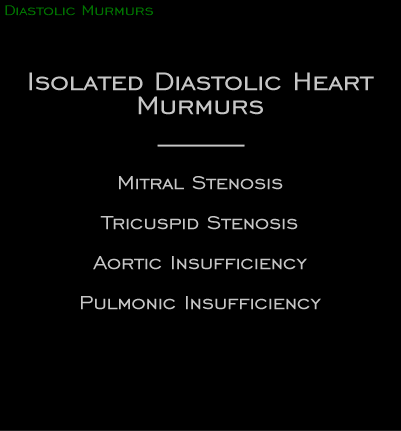
Diastolic murmurs most frequently occur in association with systolic murmurs. However, as demonstrated in the next few pages, they may also occur by themselves, in the absence of systolic murmurs. The causes of isolated diastolic murmurs are listed here.
